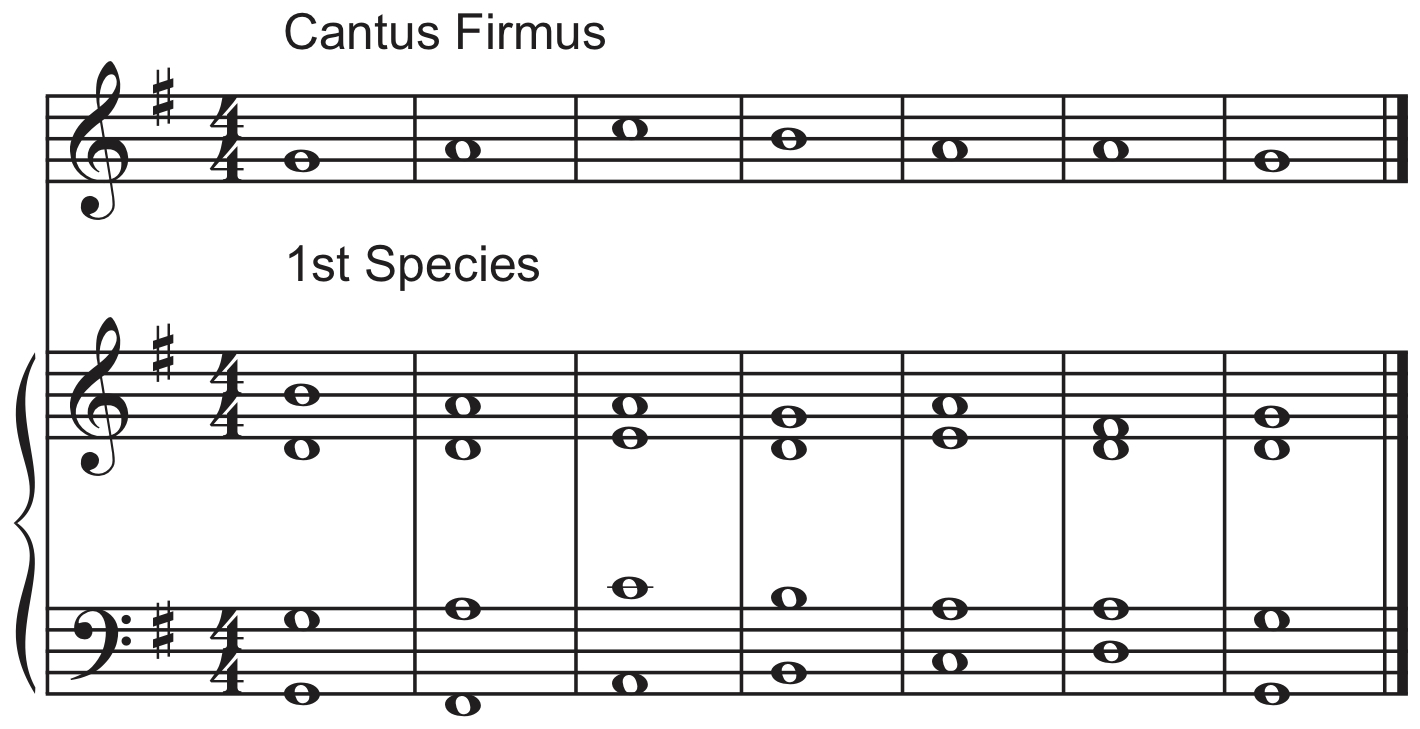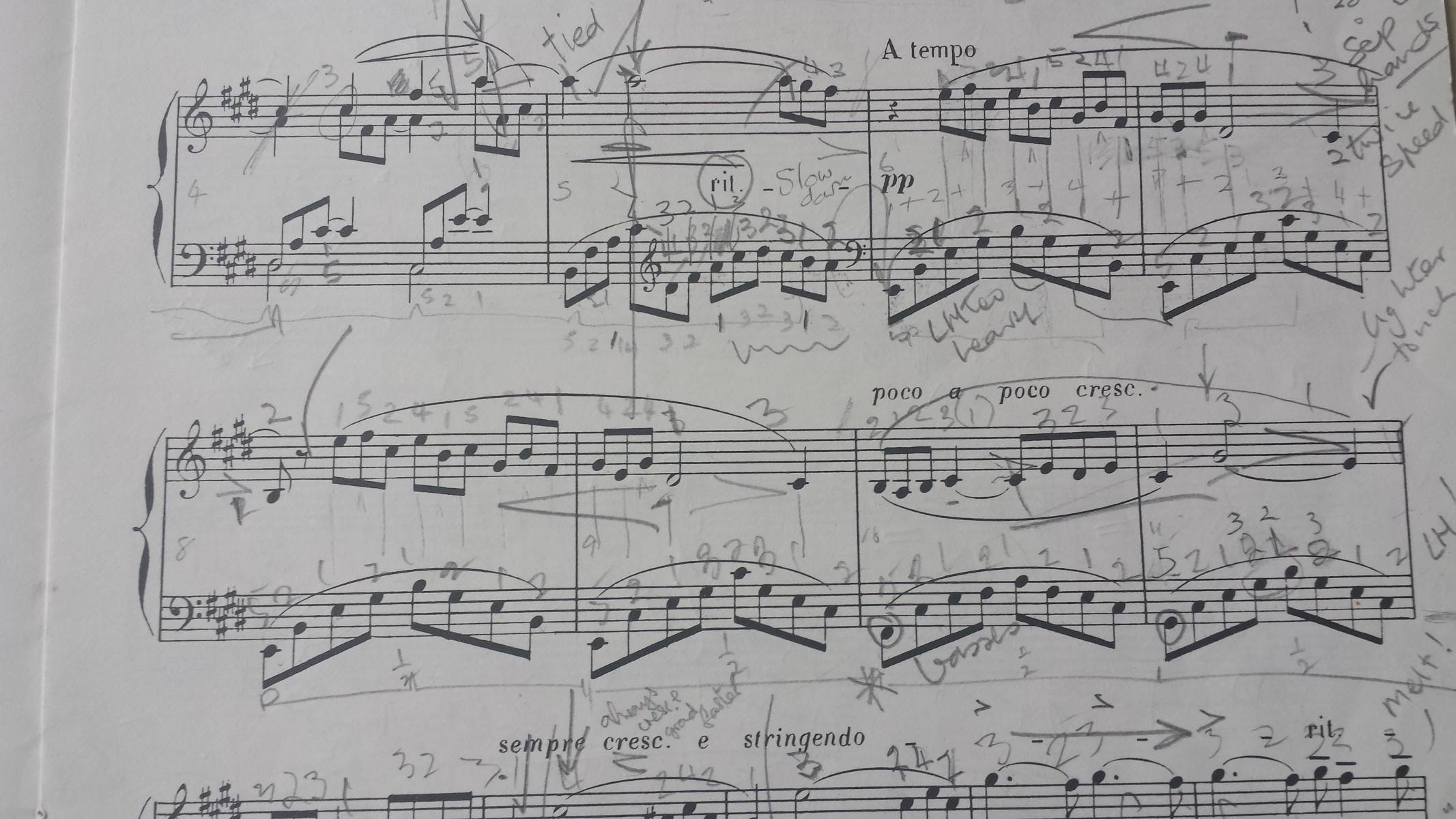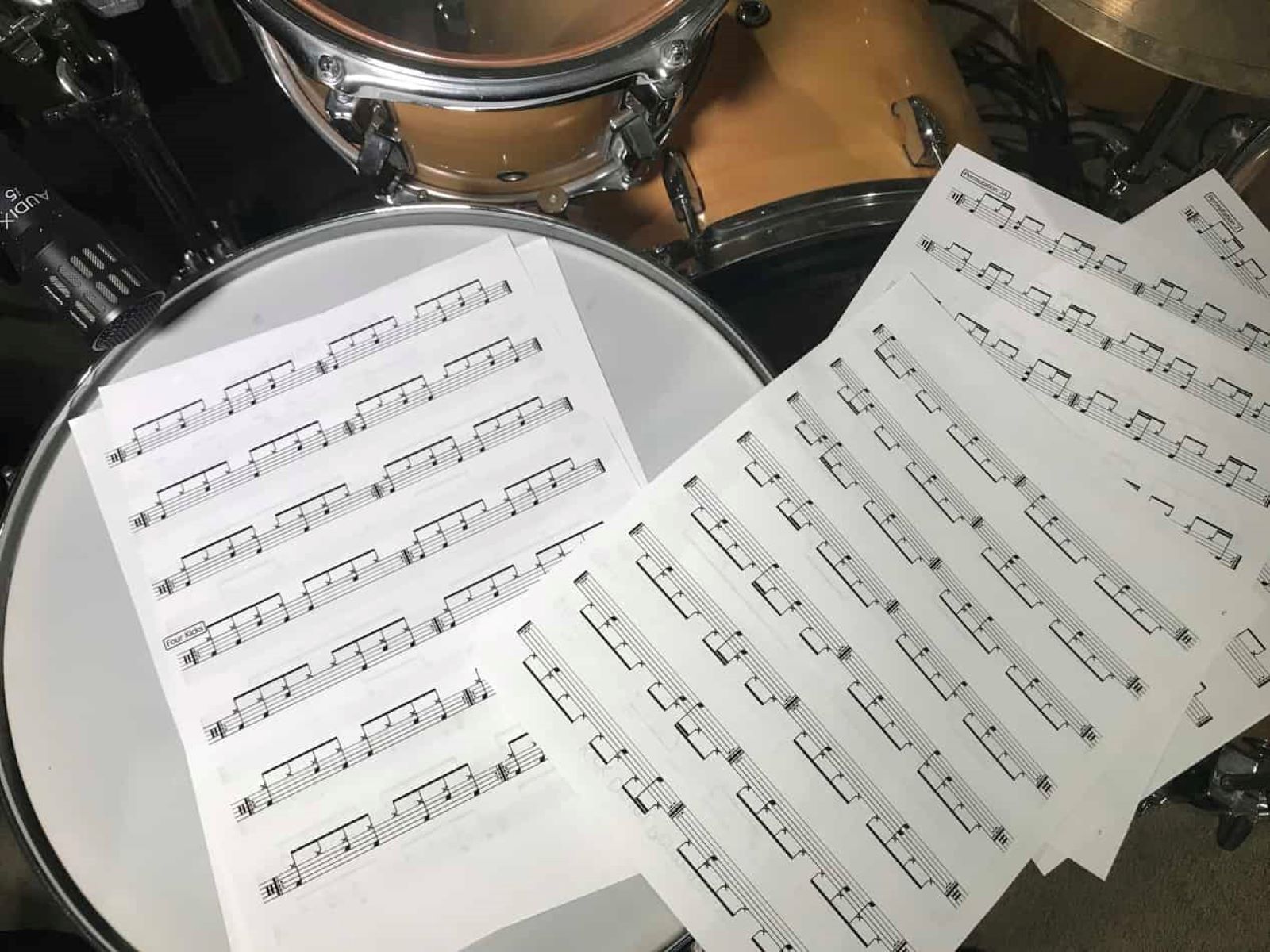Home>Production & Technology>Music Theory>Music Theory How To Write A Cantus Firmus


Music Theory
Music Theory How To Write A Cantus Firmus
Modified: January 31, 2024
Learn how to write a cantus firmus in music theory and enhance your understanding of composition techniques. Explore the principles and guidelines for creating a beautiful melodic foundation.
(Many of the links in this article redirect to a specific reviewed product. Your purchase of these products through affiliate links helps to generate commission for AudioLover.com, at no extra cost. Learn more)
Table of Contents
Introduction
Welcome to the fascinating world of music theory! In this article, we will explore the art of writing a Cantus Firmus. Whether you are a budding composer or simply interested in deepening your understanding of music, understanding how to compose a Cantus Firmus is a fundamental skill to possess.
A Cantus Firmus, which translates to “fixed melody” in Latin, refers to a single melodic line that serves as the foundation of a musical composition. It acts as a singular theme upon which other musical elements, such as harmonies and counterpoint, are built. Learning how to craft a compelling Cantus Firmus is a key step towards mastering the art of composition.
Throughout history, composers from various musical eras have utilized the Cantus Firmus technique to create stunning musical pieces. Notable examples include the use of Cantus Firmus in the works of J.S. Bach, Palestrina, and Mozart. By understanding the principles behind writing a Cantus Firmus, you can gain insight into the creative genius of these master composers and develop your own unique musical voice.
In this article, we will delve into the basic principles of writing a Cantus Firmus, including how to choose a key and establish the tonal center, the rules for melodic movement, and how to harmonize the Cantus Firmus with accompanying voices. By the end of this article, you will have the tools and knowledge to embark on your own musical composition journey.
So, let us embark on this melodic adventure together as we unravel the secrets of creating a compelling Cantus Firmus!
Definition of Cantus Firmus
A cantus firmus, or “fixed melody,” is a foundational element in music composition. It is a single, unchanging melodic line that serves as the focal point around which other musical elements are constructed. The cantus firmus acts as a guiding thread, providing stability and structure to a piece of music.
Originally developed during the Medieval period, the concept of the cantus firmus has been used by composers across different musical eras. It played a significant role in Renaissance polyphonic music, Baroque chorales, and even found its place in the works of Classical and Romantic composers.
The cantus firmus can be created by taking an existing melody, such as a hymn or a folk tune, or it can be composed from scratch. Regardless of its origin, the cantus firmus is typically composed in a straightforward, step-wise motion, making it easily recognizable and memorable.
The purpose of the cantus firmus is twofold. Firstly, it provides a sense of stability and continuity throughout the composition. As the unchanging melodic foundation, it acts as a reference point for the listener, grounding the piece in a specific tonal center.
Secondly, the cantus firmus provides a compositional framework upon which other voices or harmonies are constructed. Composers use the cantus firmus as a starting point to create counterpoint, harmonies, and additional melodic lines that interact and intertwine with the fixed melody.
It is worth noting that the cantus firmus is not confined to a single instrument or voice. It can be interpreted by various instruments or vocal parts, each contributing to the overall texture and richness of the composition. This versatility allows composers to explore different combinations and voicings, giving rise to a wide range of musical expressions.
Overall, the cantus firmus is a vital compositional tool that offers both stability and creative possibilities. It sets the foundation for melodic and harmonic exploration, ensuring a cohesive and engaging musical experience for both the composer and the listener.
Basic Principles of Writing a Cantus Firmus
When it comes to writing a Cantus Firmus, there are several key principles to keep in mind. These principles govern the melodic structure and overall musicality of the composition. By following these guidelines, you can create a compelling and cohesive Cantus Firmus.
1. Stepwise Motion: The Cantus Firmus should generally move in a stepwise fashion, meaning that the melodic line progresses primarily by adjacent scale degrees. This creates a smooth and natural flow, enhancing the overall melodic contour.
2. Avoid Excessive Leaps: While some leaps are acceptable, it is important to avoid excessive leaps between intervals. Large leaps can disrupt the melodic flow and make the Cantus Firmus challenging to sing or play.
3. Range Considerations: The range of the Cantus Firmus should be reasonable for the intended performers. It should not venture too high or too low, ensuring that it remains comfortably within the vocal or instrumental range.
4. Clear Tonal Center: Establish a clear tonal center from the beginning of the composition and maintain it throughout. This provides a sense of stability and helps guide the harmonization of the Cantus Firmus.
5. Rhythmic Variety: Incorporate a variety of rhythmic patterns and durations to add interest and complexity to the melody. Avoid repetitive rhythmic patterns, as they can become monotonous.
6. Consider Phrasing: Divide the Cantus Firmus into logical phrases, allowing for moments of rest and breath for performers. Phrasing also aids in creating a sense of musical structure and allows for expressiveness in performance.
7. Balance and Contrast: Strive for a balance between repetition and variation in the Cantus Firmus. Introduce new melodic ideas while maintaining enough repetition to create coherence. Contrast can be achieved through changes in rhythm, intervals, or contour.
8. Melodic Contour: Craft a compelling melodic contour with rise, fall, and moments of tension and resolution. A well-shaped melodic line helps engage the listener and create emotional impact.
9. Relationship to Harmonies: Consider the harmonies that will accompany the Cantus Firmus. Ensure that the melodic intervals and rhythmic choices allow for harmonization that supports and enhances the overall musical texture.
In summary, writing a Cantus Firmus requires attention to melodic movement, range, rhythm, tonality, and its relationship to harmonies. By following these basic principles, you can create a strong and engaging foundation for your musical composition. Remember to experiment, be creative, and let your musical intuition guide you as you craft your Cantus Firmus.
Choosing a Key and Establishing the Tonal Center
Choosing the right key and establishing a strong tonal center are crucial steps in composing a Cantus Firmus. The key determines the set of pitches that will be used in the composition, while the tonal center provides a sense of stability and direction to the music. Here are some important considerations when selecting a key and establishing the tonal center for your Cantus Firmus:
1. Key Signature: The key signature indicates the set of sharps or flats that appear at the beginning of each staff. Choose a key that aligns with the desired mood or character of your composition. Different keys evoke different emotions, so explore the tonalities to find the one that best suits your musical intentions.
2. Hierarchy of Tonal Degrees: In Western tonal music, certain degrees of the scale have stronger gravitational pull than others. The tonic (first degree) is the most stable and serves as the tonal center. Consider emphasizing the tonic in your Cantus Firmus to establish a strong tonal foundation.
3. Cadences: Cadences are melodic or harmonic progressions that provide a sense of resolution and closure. They often occur at phrase endings or important moments in the composition. Pay attention to the cadences you use to reinforce the tonal center and guide the listener’s ear.
4. Modulation: Modulation refers to a change in key within a composition. While it is possible to modulate in a Cantus Firmus, especially in more advanced compositions, consider the impact it will have on the tonal center and the overall coherence of your piece. Modulations can add complexity but should be used purposefully.
5. Form and Structure: Consider the larger musical structure of your composition, such as the use of sections or movements. The tonal center should be consistent within each section, providing a sense of unity and coherence.
6. Harmonic Progressions: The choice of harmonies and their relationship to the tonal center can reinforce the key and tonality of the Cantus Firmus. Explore different chord progressions and harmonic devices to enrich the musical journey.
Remember, choosing a key and establishing the tonal center is a creative decision that should align with your artistic vision. Consider the emotional impact, the melodic possibilities, and the overall structure of your composition as you make these choices. Experiment, trust your ear, and don’t be afraid to break conventional rules if it serves your artistic expression.
Rules for Melodic Movement
When writing a Cantus Firmus, there are certain rules and guidelines that govern the melodic movement. These rules help create a coherent and pleasing melodic line. While music is a creative art form, adhering to these principles adds structure and clarity to your composition. Here are some important rules to consider when it comes to the melodic movement of your Cantus Firmus:
1. Stepwise Motion: The Cantus Firmus should primarily move in a stepwise fashion, meaning that the melodic line progresses by adjacent scale degrees. This creates a smooth and natural flow, making it easier for performers to sing or play and enhancing the overall melodic contour.
2. Avoid Excessive Leaps: While some leaps are acceptable, it is important to avoid excessive leaps between intervals. Large leaps can disrupt the melodic flow and make it challenging for performers to navigate the line. It’s best to use leaps judiciously and in a way that makes musical sense.
3. Divergent and Convergent Motion: Divergent motion refers to when two voices move apart, while convergent motion is when the voices move towards each other. Generally, it is advisable to avoid parallel fifths or octaves in Cantus Firmus writing. Contrary or oblique motion is preferred, as it allows for melodic independence and clarity in harmonization.
4. Avoid Dissonant Intervals: Dissonant intervals, such as augmented seconds or tritones, can create harmonic tension. Unless used intentionally for a specific effect, it is generally best to avoid these intervals in the Cantus Firmus. Opt for consonant intervals that provide a stable and pleasing melodic sound.
5. Avoid Sequential Patterns: While sequential patterns can be useful in certain contexts, relying too heavily on them in the Cantus Firmus can result in a predictable and monotonous melody. Instead, aim for melodic variety by incorporating different melodic shapes, intervals, and rhythms.
6. Balance and Symmetry: Strive for a balance between repetition and variation in your Cantus Firmus. Incorporate repetition of melodic motifs or phrases to create coherence, but also introduce new melodic ideas to maintain interest and musical development.
7. Avoid Crossing Voices: In multi-voice compositions, it is generally preferred to avoid crossing voices in the Cantus Firmus. This refers to one voice moving above or below another voice. Crossing voices can cause confusion and muddiness in the overall texture, so it’s best to keep the voices distinct and clear.
Remember, these rules serve as guidelines to help you create a strong and effective Cantus Firmus. While it’s important to adhere to these principles, don’t be afraid to experiment and incorporate your own unique musical ideas. Ultimately, the melodic movement should serve the overall musical expression and convey the emotions and message you intend to convey.
Harmonizing the Cantus Firmus
Harmonizing the Cantus Firmus is a crucial step in creating a full musical composition. Harmonization involves adding supporting voices or chords that complement and enhance the melodic line. Here are some important considerations when harmonizing your Cantus Firmus:
1. Understand the Role of Harmonies: Harmonies serve to support and enrich the melodic line of the Cantus Firmus. They add depth, color, and texture to the composition. The harmonies should enhance the emotional and expressive qualities of the melody without overshadowing it.
2. Choose Chord Progressions: Familiarize yourself with common chord progressions and harmonic patterns that align with the chosen key and tonal center of the Cantus Firmus. Experiment with different chord progressions to find ones that fit well and complement the melodic movement.
3. Consider Voice Leading: Voice leading refers to the smooth and logical movement of each individual voice within the harmonization. Avoid large leaps in the supporting voices and strive for smooth voice leading to create a pleasing and coherent harmonic progression.
4. Observe Harmonic Function: Different chords have different functions within a key, such as tonic, dominant, or subdominant. Understanding the functions of each chord can help you create harmonic progressions that enhance the tonal center and convey specific musical emotions.
5. Balance and Voicing: Pay attention to the balance and voicing of the harmonies relative to the Cantus Firmus. Ensure that no voice overpowers the melody or becomes lost in the texture. Aim for a balanced and clear harmonic structure that supports the melodic line.
6. Utilize Counterpoint: Counterpoint involves the interplay of multiple melodic lines. When harmonizing the Cantus Firmus, consider adding counterpoint in the supporting voices to create a rich and dynamic musical texture. Explore different melodic ideas and contrapuntal techniques to enhance the composition.
7. Tension and Resolution: Explore the concept of tension and resolution in your harmonic choices. Create moments of tension by introducing dissonance, and resolve them with consonant harmonies. This adds dramatic effect and musical interest to the composition.
8. Listen and Revise: As you harmonize the Cantus Firmus, listen carefully to the overall sound and feel of the composition. Make adjustments and revisions as needed to achieve the desired musical effect. Trust your ear and intuition as you refine and perfect the harmonization.
Remember, harmonizing the Cantus Firmus requires a combination of technical skill and creative intuition. Experiment with different harmonies, chord progressions, and voicings to find the most compelling and expressive combination. Stay true to the essence of the original melodic line while creating a harmonically rich and engaging musical composition.
Conclusion
Writing a Cantus Firmus is an intricate and rewarding endeavor that allows you to explore the depths of music theory and composition. Through the careful selection of key, establishment of a tonal center, adherence to the rules of melodic movement, and skillful harmonization, you can create a captivating and harmonically rich musical piece.
As you journey through the process of composing a Cantus Firmus, remember to balance creativity with structure. While there are guidelines to follow, don’t be afraid to let your musical intuition guide you. Experiment with different melodic ideas, harmonies, and voicings, and listen attentively to the overall sound and emotional impact of your composition.
Understanding the principles and techniques of writing a Cantus Firmus opens up a world of musical possibilities. By studying the works of great composers who have utilized this technique throughout history, you can gain inspiration and insight into the art of composition.
Whether you are a composer, musician, or simply a music enthusiast, honing your skills in writing a Cantus Firmus will deepen your understanding of music theory and allow you to express your creative voice. Embrace the challenge, let your imagination soar, and embrace the joy of creating beautiful and memorable melodies.
So, embark on this melodic journey and let the Cantus Firmus be your guiding light as you compose music that touches the hearts and souls of all who listen.











